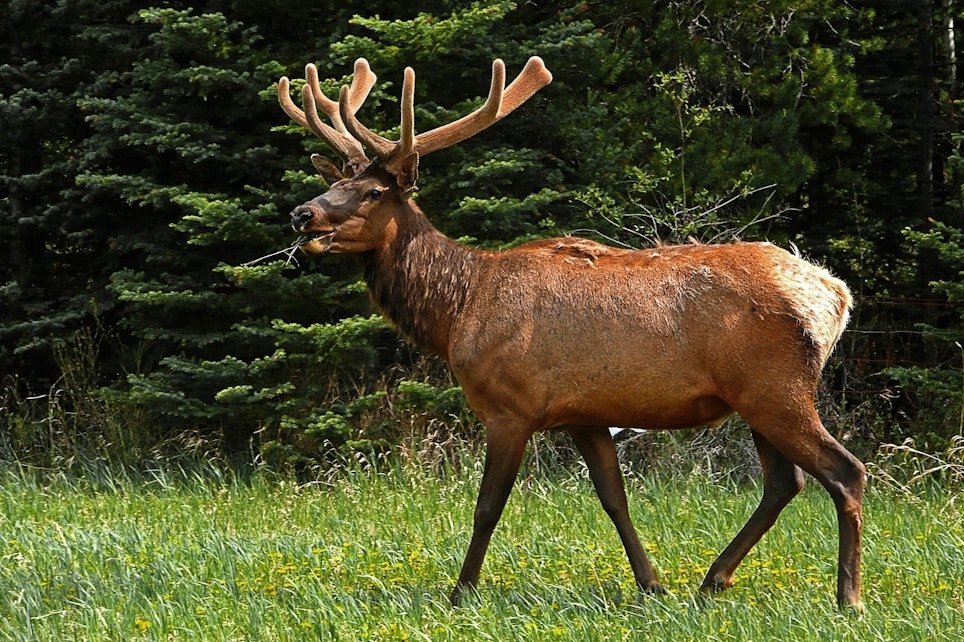Few things bring sob-sister donations rolling into the coffers of anti-hunting groups faster than well-thought-out ad campaigns to protect “cuddly” apex predators like wolves, grizzly bears and cougars from “slaughter” by hunters. Two generations raised on Disneyesque portrayals have created a misinformed public that pushes ballot initiatives and, in many states, produces antihunting state game commissioners, both of which make the control of apex predator populations exceedingly difficult, if not against the law. Neither group cares that, in so doing, ungulate populations suffer, at times badly enough to enter predator pit status.
As a direct result, hunting opportunity suffers.
Case in point. A 2011-2013 study conducted in Alaska’s Nelchina Basin, about 50 miles from the small crossroads town of Glenallen in southcentral Alaska, was conducted by state biologists Bruce Dale, Wildlife Science Coordinator with the state of Alaska, and biologist Chris Brockman. The plan was to attach cameras/GPS collars to brown bears and have them shoot selfie videos to help them understand how much bear predation affected moose and caribou populations in an area near the state’s limited paved road system.
In a nutshell, here’s what they found. After capturing and collaring 17 brown bears, seven of the bears kept the collars intact during the entire study period. Those seven bears produced approximately 36,376 video clips — a 10-second video clip every 15 minutes — from mid-May to the end of June, when bears are most likely to be feeding on moose and caribou calves. At the end of the study, these bears were re-darted and camera collars collected. The footage showed that these seven bears killed approximately 238 moose and caribou calves during those 45 days. It should be noted that 75 percent of the Nelchina herd’s calving area is within the study area, and that, overall, moose numbers dwarf caribou numbers in this area. And remember, this is just seven bears, a fraction of the region’s population, and that the big bears compete with local wolf packs and Mother Nature when it comes to killing calves.
Taking it a step further, the late Vic Van Ballenberghe — recognized as perhaps the most knowledgeable moose biologist of all time and who spent four decades studying them in Alaska’s vast Denali National Park — learned that, at times, there was exactly zero moose calf survival in some regions of the park. He learned that grizzly bears know where seasonal abundances of food lie in their home ranges. Just as they know when salmon runs occur, they learn when and where moose choose to have their calves each spring. A cow moose, which is unable to reason, has her calf, it’s eaten by a bear, but she returns to the same spot next spring to calve again. Lather, rinse, repeat. The bear teaches its cubs where the hunting is good, and the cycle continues until there are no moose left, and the bears move on to greener pastures.
From 1991-2015, I lived in, and hunted and fished, this area extensively, and I spent a lot of hours surveying game populations from the back seat of a Piper Super Cub. I saw firsthand what bears and wolves can do. I also watched as sport hunting opportunities and hunter success rates dwindled as the moose, caribou, and Dall sheep numbers were pummeled. In fact, only subsistence hunting was allowed for caribou in the Nelchina area; sport hunters were completely shut out.
Now, think about how efficient grizzlies and wolves are as apex predators, and think about how increasing their numbers in the Lower 48 states have, and will, impact future ungulate populations. I throw cougars into this mix as well, since they are revered just as highly by the animal rightist community.
Despite what many anti-hunters tell you, the reintroduction of wolves into the Northern Rockies has had a detrimental effect on ungulate populations in general, and elk, moose and deer in particular. When discussing elk populations inside Yellowstone Park, even the National Park Service — not known as being particularly hunter-friendly — states on its website that “So far, data suggest wolves are contributing to decreased numbers of elk calves surviving to adulthood and decreased survival of adult elk. Wolves may also be affecting where and how elk use the habitat.”
Really? Throw in a growing grizzly bear population, as well as black bears, cougars and coyotes, and it’s no wonder that ungulate numbers are getting hammered. And while many factors, like harsh winters, contribute to ungulate population fluctuations, according to The Wildlife Society, “In the 1990s, the Yellowstone elk population prospered, reaching about 20,000 individuals. With the reintroduction of grey wolves in the park, however, the elk population has fallen over the years.” With that decline came a decline in elk hunting opportunities outside the park. For example, a highly popular late-season elk hunt held just outside Gardiner, Montana, that once issued permits for upwards of 1,000 elk each year was eliminated in 2011 to help protect the dwindling herd. That’s a huge loss in opportunity for sportsmen.
This is why hunters should demand that Lower 48 wolf, grizzly and cougar populations be vigorously controlled as part of state and federal game management programs. I was in the courtroom back in 1990 when a judge upheld California Proposition 117, which effectively banned all hunting of cougars in the state, the result of which has been a statewide decimation of deer populations, and a resulting loss of sport hunting opportunity. Colorado has a plan to begin reintroducing wolves to the state this year; I smell disaster for elk and deer numbers. In Minnesota, a forever wolf hunt ban was introduced in the legislature, even though the state does not hunt wolves at present. The list goes on. It’s a never-ending battle.
What’s your take on controlling apex predators? Drop me a note at editor@grandviewoutdoors.com. I’d love to hear your opinion.






